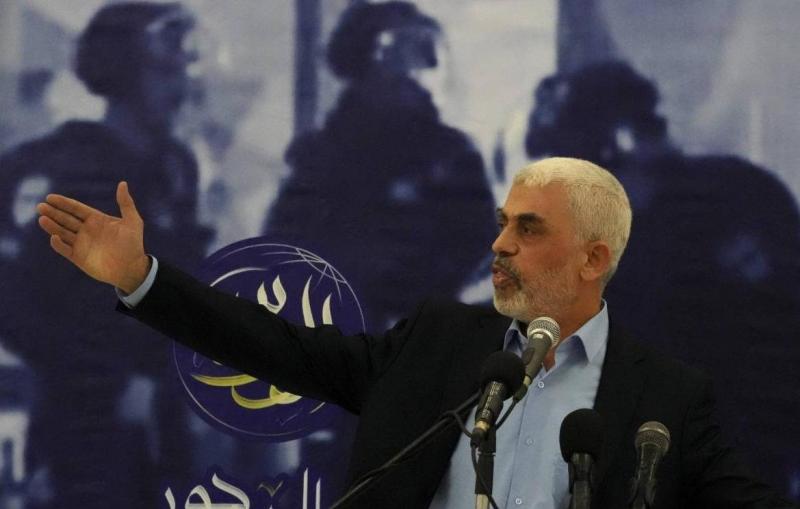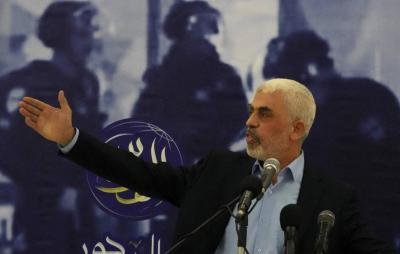Five years ago, Yahya Sinwar, the leader of Hamas in Gaza, wrote a note on a document that he knew intermediaries would deliver to Israeli Prime Minister Benjamin Netanyahu. Sinwar wrote in Hebrew, according to former National Security Advisor Meir Ben-Shabbat, "Take a calculated risk regarding a ceasefire." Shortly before that, the Hamas leader said something similar to an Italian journalist: "I don't want war anymore. I want a ceasefire." When asked about his ambitions for the impoverished Palestinian coastal territory, he responded, "We could be like Singapore or Dubai." After the long and violent attack planned by Hamas on October 7 against Israel, the Israeli security establishment views his words differently: they believe his statements were part of a scheme to create the illusion that Hamas, deemed a terrorist organization by the United States and the European Union, was downplaying its embrace of violence to focus on governance. Now, Israeli authorities acknowledge that a sense of complacency has seeped in regarding Hamas. In recent years, the military has reduced its monitoring of the Gaza border fence, relying on electronic sensors and redeploying forces from the area to guard settlements in the West Bank. They left Gaza and focused on Iran.
As Israeli analyst Chen Artzi Soor recently wrote in Yedioth Ahronoth: "Ambitious military analysts preferred to concentrate on Iran and Syria, as work on Palestinian issues was not considered existentially important." The prevailing sentiment was that Hamas had been deterred, and real challenges lay elsewhere. Mikhail Milstein, former head of Palestinian research in the military intelligence division, stated: "Sinwar understood Israeli awareness very well" — he wanted to make Israel believe that Hamas was focused on stability in Gaza and enhancing civil affairs. He planted this false idea in the minds of Israelis.
Today, the Israeli military has begun to reduce airstrikes on Gaza in its mission to destroy Hamas, which has led to the deaths of over 11,000 people during the operation, according to the health ministry managed by Hamas. Sinwar appears as the mastermind behind the attack. He is the primary target for assassination and is presumed to be hiding in a deep tunnel in Gaza, "like a little Hitler in a bunker," as Netanyahu recently stated.
As the October 7 attacks reshape regional — even global — politics and pose the risk of war expansion, it is worth noting that the cause was the proximity of enemies to one another. Sinwar and the Israelis have been watching and analyzing each other for decades. Sinwar was born in a poor neighborhood in Khan Younis, southern Gaza, and is now 61 years old. He helped establish Hamas's military wing in the late 1980s during the First Palestinian Intifada. He later took it upon himself to eliminate Palestinian collaborators with Israel, being responsible for the killing of four of them. The Israeli military authorities, still operating within Gaza, sentenced him to life in prison in 1989.
Behind bars, Sinwar gained deep knowledge of the Hebrew language and Israeli society by regularly reading newspapers alongside biographies of key Israeli figures. He also became the undisputed leader of Hamas prisoners. According to Israeli officials and a former Hamas activist, Sinwar continued to order the killing of collaborators while in prison — including one whom he personally decapitated.
Cold-Blooded Leader
Officials describe him as a cold-blooded and charismatic leader; a sturdy, muscular man with short hair and a beard that has mostly turned white now. In the early 2000s, while in prison, Sinwar began suffering from headaches and blurred vision. He was transferred to Soroka Medical Center in Beersheba, where a surgeon removed a brain tumor, saving his life. Betty Lahad, head of the prison system's intelligence at that time, stated in a television documentary that she attempted to use this incident to recruit him as an informant. "I told him: The State of Israel saved your life" — "I thought I could turn him into one of us, but he wasn’t interested. He kept talking about the day he would be released. I told him you will never get out. He said there's a date: God knows it."
Release
There was a date. It was October 18, 2011, when Israel released over a thousand Palestinian prisoners in exchange for an Israeli soldier held by Hamas, Gilad Shalit. Among those released — and the man who prepared the list — was Sinwar. Since he killed Palestinians rather than Israelis, and was no longer young, some Israeli officials did not object to his presence on the list, while others did. Milstein, the former intelligence officer, said, "There was talk about how he was not a threat," and "he didn’t want to return to dangerous activity, he forgot how to plan a terrorist attack. I tried to tell them they were wrong. Hamas is his entire life mission. It took him just one week to return to his contacts and activities. Today, Hamas in Gaza is Sinwar."
Group Leader
He returned to Hamas at a high level and by 2017 was elected the leader of the group in all of Gaza, succeeding Ismail Haniyeh, who was sent to Qatar. Akram Attallah, a journalist for the Palestinian Al-Ayam newspaper in the West Bank, said over the phone: "Hamas and Sinwar misled Israel and made it believe that war was not an option for Hamas." He continued: "It was a sophisticated disinformation campaign to deceive Israel into believing they were seeking peace and economic life for the people of Gaza." After the October attack, a senior Hamas official, Ali Baraka, said something similar — that the group prepared for October 7 for two years while deceiving Israel into thinking they were "busy ruling Gaza."
The planning included not only the attack but also how Hamas would govern afterward. This was the subject of a conference held in Gaza in 2021 titled "The Promise of the Hereafter," where Sinwar delivered the keynote address. A summarized document revealed his discussion about what to do with Israeli experts after the country’s defeat: "Keep Jewish scholars and experts in medicine, engineering, technology, and civil and military industry for a while and do not let them leave with their knowledge and expertise."
While officials in Hamas did not speak directly to the Israeli authorities, Sinwar worked through intermediaries to persuade Israel of his group's good intentions. As part of these efforts, he cooperated with the Palestinian Authority to negotiate work permits for around 18,000 Gazans, enabling them to work as day laborers inside Israel. Some of these workers were among those security officials claimed mapped out communities and prepared lists of local families to guide Hamas fighters before October 7.
Since the attacks, Sinwar has not issued any statements or spoken to the press. Meanwhile, 75 miles away from the attack site, a poster hangs on the wall of the Ministry of Defense in Tel Aviv. It includes many Hamas leaders with lines drawn over the faces of those who have been killed. The plan is to fill the poster with marks. Sinwar is at the top of the list.




